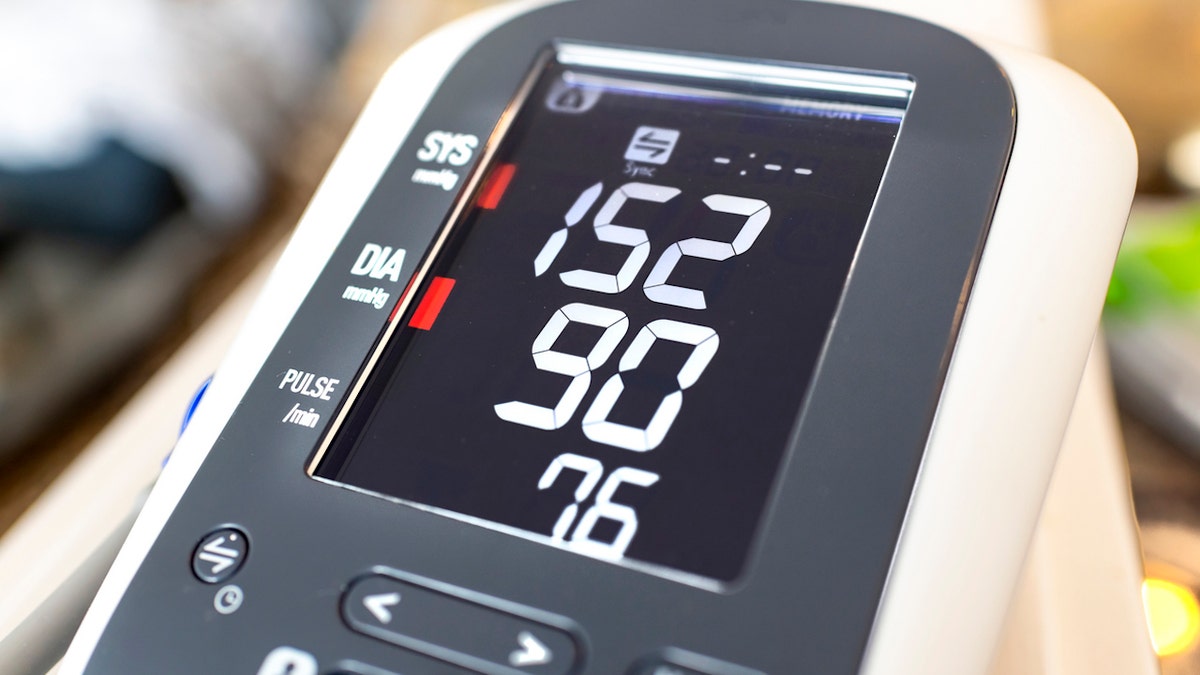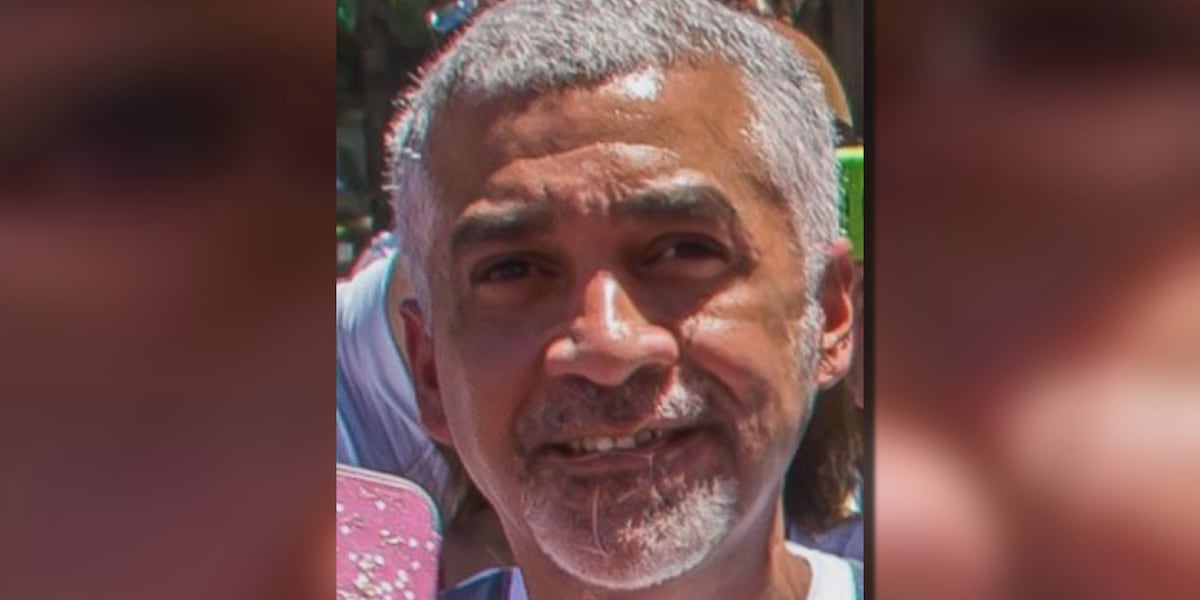Health
Trump’s survival was ‘miraculous’ given bullet’s proximity to his brain, doctor says

The morning after former President Donald Trump survived an assassination attempt during a rally in Butler, Pennsylvania, on Saturday afternoon, Dr. Marc Siegel spoke to Fox News about the “miraculous” outcome.
Appearing on “America Reports,” the Fox News medical contributor and clinical professor of medicine at NYU Langone Medical Center expressed his admiration for Trump’s reaction in what he described as a “war zone.”
“The crowd kept its composure when this was going on … They were led by President Trump’s rally cry, raising his fist, saying ‘Fight’ and not giving up,” Siegel said.
TRUMP SHOOTING: ‘GOD’S HAND OF PROTECTION WAS ON HIM,’ SAYS REV. FRANKLIN GRAHAM, OTHERS
“From a medical point of view, that idea of showing courage, and then showing compassion, reaching out on social media to the families of the victim and those who were injured, also sends the right message.”
The doctor also noted the quickness with which Trump got down when the shots were fired and then was led off the stage, which showed an “adroitness.”
The morning after former President Donald Trump survived an assassination attempt during a rally in Butler, Pennsylvania, on Saturday afternoon, Dr. Marc Siegel spoke to Fox News about the “miraculous” outcome. (Fox News/Getty Images)
“You don’t know what you’re going to do in that situation,” he said.
Siegel also emphasized how “miraculous” it is that the former president survived the incident.
CLICK HERE TO SIGN UP FOR OUR HEALTH NEWSLETTER
“I’ve been talking to emergency room doctors, vascular surgeons and trauma surgeons all over the country this morning, and nobody can remember a case like this,” he said.
In particular, the doctor noted how rare it is for someone to be just grazed by a bullet from a high-powered rifle, as opposed to struck.

“I’ve been talking to emergency room doctors, vascular surgeons and trauma surgeons all over the country this morning, and nobody can remember a case like this,” Dr. Siegel said. (Dr. Marc Siegel)
“I trained in the Bellevue [Hospital Center] emergency room, I took care of gunshot victims countless times, and I never saw anything from a high-powered rifle that only grazed something.”
“People can recount someone being grazed by a bullet — I’ve seen that in the ER, but never from a high-powered rifle,” Siegel said.
The doctor stressed the small chance of Trump escaping this alive — “especially since it’s next to the part of the brain that is absolutely uniformly deadly, over 95% deadly, if he’d been hit in the brain there.”

Audience members duck in the crowd during a shooting attempt at a campaign rally for GOP presidential candidate and former President Donald Trump at Butler Farm Show Inc. on July 13, 2024, in Butler, Pennsylvania. (Getty Images)
In a separate conversation with Fox News Digital, the doctor went into more detail about the former president’s injuries.
“The bullet grazed his ear – it looked a bit macerated, but we don’t know if he got stitches and I can’t tell yet if he might need plastic surgery, but that would be easy to do,” Siegel said.
(“Macerated” is a medical term that refers to the process of skin softening and breaking down.)
“It was reminiscent of Teddy Roosevelt being shot in 1912 when he was running for another term as president after serving from 1901 to 1909,” the doctor noted.
“His courage, strength, good humor and caring for others are traits of a leader.”
“Roosevelt was shot in the chest during a campaign speech, and it hit his eyeglasses case and bounced back, leaving bullet holes in his speech,” Siegel continued. “Comparisons have been made between Roosevelt and Trump.”
Siegel reiterated that Trump handled the situation “extraordinarily” well.
For more Health articles, visit www.foxnews/health
“His courage, strength, good humor and caring for others are traits of a leader, as was his alacrity in hitting the ground and bouncing back up,” the doctor said.
“His positive reaction and courage instead of fear bodes well for quick psychological recovery without PTSD, which affects 10% to 25% of combat veterans.”

Health
Chronic Pain Afflicts Billions of People. It’s Time for a Revolution.

“In the beginning, everyone thought they were going to find this one breakthrough pain drug that would replace opioids,” Gereau said. Increasingly, though, it’s looking like chronic pain, like cancer, could end up having a range of genetic and cellular drivers that vary both by condition and by the particular makeup of the person experiencing it. “What we’re learning is that pain is not just one thing,” Gereau added. “It’s a thousand different things, all called ‘pain.’”
For patients, too, the landscape of chronic pain is wildly varied. Some people endure a miserable year of low-back pain, only to have it vanish for no clear reason. Others aren’t so lucky. A friend of a friend spent five years with extreme pain in his arm and face after roughhousing with his son. He had to stop working, couldn’t drive, couldn’t even ride in a car without a neck brace. His doctors prescribed endless medications: the maximum dose of gabapentin, plus duloxetine and others. At one point, he admitted himself to a psychiatric ward, because his pain was so bad that he’d become suicidal. There, he met other people who also became suicidal after years of living with terrible pain day in and day out.
The thing that makes chronic pain so awful is that it’s chronic: a grinding distress that never ends. For those with extreme pain, that’s easy to understand. But even less severe cases can be miserable. A pain rating of 3 or 4 out of 10 sounds mild, but having it almost all the time is grueling — and limiting. Unlike a broken arm, which gets better, or tendinitis, which hurts mostly in response to overuse, chronic pain makes your whole world shrink. It’s harder to work, and to exercise, and even to do the many smaller things that make life rewarding and rich.
It’s also lonely. When my arms first went crazy, I could barely function. But even after the worst had passed, I saw friends rarely; I still couldn’t drive more than a few minutes, or sit comfortably in a chair, and I felt guilty inviting people over when there wasn’t anything to do. As Christin Veasley, director and co-founder of the Chronic Pain Research Alliance, puts it: “With acute pain, medications, if you take them, they get you over a hump, and you go on your way. What people don’t realize is that when you have chronic pain, even if you’re also taking meds, you rarely feel like you were before. At best, they can reduce your pain, but usually don’t eliminate it.”
A cruel Catch-22 around chronic pain is that it often leads to anxiety and depression, both of which can make pain worse. That’s partly because focusing on a thing can reinforce it, but also because emotional states have physical effects. Both anxiety and depression are known to increase inflammation, which can also worsen pain. As a result, pain management often includes cognitive behavioral therapy, meditation practice or other coping skills. But while those tools are vital, it’s notoriously hard to reprogram our reactions. Our minds and bodies have evolved both to anticipate pain and to remember it, making it hard not to worry. And because chronic pain is so uncomfortable and isolating, it’s also depressing.
Health
7 blood pressure mistakes that could be throwing off your readings

Several key mistakes could throw off the accuracy of blood pressure readings for people who take them at home.
The average “normal” blood pressure is 120/80, according to the American Heart Association.
Almost half of all U.S. adults have elevated blood pressure (systolic pressure between 120 and 19 and diastolic pressure less than 80). High blood pressure (hypertension, which is when the systolic pressure is between 130 and 139 or diastolic pressure is between 80 and 89) can raise the risk of heart attack and stroke if left untreated, per the AHA.
JUST 5 MINUTES OF EXERCISE COULD REDUCE HIGH BLOOD PRESSURE, STUDY FINDS
“It is very common to see patients with bad data,” said Dr. Bradley Serwer, a Maryland-based cardiologist and chief medical officer at VitalSolution, an Ingenovis Health company that offers cardiovascular and anesthesiology services to hospitals.
The average “normal” blood pressure is 120/80, according to the American Heart Association. (iStock)
“It is essential to follow the proper standardized instructions.”
The cardiologist shared with Fox News Digital the following common mistakes he often sees patients make when monitoring their blood pressure.
1. Using the wrong arm position
Certain arm positions can lead to inflated results and misdiagnoses of hypertension. This was supported by recent research from Johns Hopkins Medicine.
BLOOD PRESSURE IS ‘HIGHER THAN NORMAL’ FOR 1 IN 7 KIDS, SAYS AMERICAN HEART ASSOCIATION
People who rested their arms on their laps drove up the top number in the blood pressure reading (systolic pressure) by nearly 4 mmHg, while leaving their arm hanging at their side increased it by nearly 7 mmHg.
For the most accurate results, the guidelines are to rest the arm on a desk or another firm surface at the same level as the heart, Serwer told Fox News Digital.
2. Sitting in the wrong position
“The proper position is to sit upright with your feet on the floor and your legs uncrossed, resting your arm on a flat surface that is level with your heart,” Serwer advised.

Certain arm positions can lead to inflated results and misdiagnoses of hypertension, research has shown. (iStock)
3. Using the wrong type or size of cuff
If the cuff is too large or small, measurements will be abnormal, the cardiologist cautioned.
“Most blood pressure monitors use either an arm cuff or a wrist cuff,” he said. “Arm cuffs tend to be more accurate and require fewer steps to ensure accuracy.”
4. Not calibrating the cuff
Serwer said he typically asks all patients to bring their home cuff to the office, where he first measures their blood pressure manually and then uses the patient’s cuff.
“We can then assess the accuracy of their cuff,” he said.
5. Not allowing enough time to equilibrate
The most accurate results are obtained after sitting in a low-stress environment for five minutes, Serwer noted.
“Know your blood pressure, even if you are healthy.”
6. Drinking caffeine beforehand
“Avoid stimulants before measuring your pressure, as caffeine will raise it,” Serwer said.
7. Checking at different times of day
When taking blood pressure, Serwer recommends checking it twice and waiting at least one minute between measurements.
“Blood pressure fluctuates throughout the day, so checking your pressure at the same time each day gives us a better trend,” he added.
Serwer also advises his patients to track their blood pressure readings in a log.

“If the average blood pressure reading is greater than 130/80, they have stage I hypertension and should be evaluated by their primary care provider,” a cardiologist said. (iStock)
“If the average blood pressure reading is greater than 130/80, they have stage I hypertension and should be evaluated by their primary care provider,” he said.
“If their blood pressure is greater than 180/100 or if they have symptoms of chest pain, shortness of breath or severe headache, they should seek immediate attention.”
CLICK HERE TO SIGN UP FOR OUR HEALTH NEWSLETTER
Even if there are no other symptoms other than high blood pressure, Serwer emphasizes that people shouldn’t wait until they have complications before treating hypertension.
“Heart attacks, strokes, renal failure and peripheral vascular disease can often be avoided with early interventions,” he said.

In most cases, making lifestyle changes such as improving your diet, exercising regularly and maintaining a healthy weight can help keep blood pressure within a safe range, according to the AHA. (iStock)
“Know your blood pressure, even if you are healthy.”
In most cases, making lifestyle changes such as improving your diet, exercising regularly and maintaining a healthy weight can help keep blood pressure within a safe range, according to the AHA.
For more Health articles, visit www.foxnews.com/health
When necessary, a doctor can provide guidance on medications to treat hypertension that does not respond to lifestyle changes.
Health
Words and game of Scrabble keep married couple in wedded bliss for decades

A married couple who have long enjoyed the game of Scrabble both together and separately before they even met are never at a loss for words — and attribute their wedded bliss in part to their love of the nostalgic game.
They’re still playing in tournaments built around the game decades after they began doing so.
Graham Harding and his wife Helen Harding, both in their 60s, have been married for over 20 years.
WATCHING GAME SHOWS LIKE ‘JEOPARDY!’ AND ‘WHEEL OF FORTUNE’ CAN BOOST COGNITIVE HEALTH, SAY EXPERTS
They met in the 1990s at Scrabble tournaments, as news agency SWNS reported.
But it was a “special match” in 2000 that brought the couple together — and has kept them together now.
Graham and Helen Harding on their wedding day. They’ve been playing in Scrabble tournaments for some 30 years. (Courtesy Graham and Helen Harding via SWNS)
Graham Harding is from the East Berkshire Scrabble Club, while his wife Helen is from the Leicester Scrabble Club in the U.K.
They have been taking part in the UK Open Scrabble Championship in Reading this week.
“The more words you know, the more ammunition you’ve got.”
“Scrabble is all about having a good vocabulary,” said Graham Harding, SWNS noted.
7 HEALTHY LIFESTYLE CHANGES THAT COULD HELP REDUCE RISK OF DEPRESSION, SAYS STUDY: ‘ENORMOUS BENEFITS’
“But it is a Scrabble vocabulary — not necessarily everyday English.”
Added Helen Harding, “The more words you know, the more ammunition you’ve got.”

Graham and Helen Harding’s wedding cake. They bonded over their love of Scrabble – and are still playing in tournaments together. (Courtesy Graham and Helen Harding via SWNS)
The couple said they were “vague acquaintances” for about five years after they first met.
Then they got together after a special match in Swindon.
CLICK HERE TO SIGN UP FOR OUR HEALTH NEWSLETTER
They maintained a long-distance relationship before they got married in 2004.
The couple even brought their Scrabble board to their wedding.

The couple likely have played thousands of games between them. (Courtesy Graham and Helen Harding via SWNS)
It featured a message with Scrabble pieces that said, “Congratulations on your wedding day” — while their wedding cake said, in Scrabble letters, “Helen and Graham.”
For more Health articles, visit www.foxnews.com/health
They each took up the hobby early in life well before they met each other.
The tournament that’s been taking place this week is the first since the COVID pandemic after a five-year break — and the couple has played some two dozen games in it as of Friday, SWNS reported.
-

 Politics1 week ago
Politics1 week agoNew Orleans attacker had 'remote detonator' for explosives in French Quarter, Biden says
-

 Politics1 week ago
Politics1 week agoCarter's judicial picks reshaped the federal bench across the country
-

 Politics1 week ago
Politics1 week agoWho Are the Recipients of the Presidential Medal of Freedom?
-

 Health7 days ago
Health7 days agoOzempic ‘microdosing’ is the new weight-loss trend: Should you try it?
-

 World1 week ago
World1 week agoSouth Korea extends Boeing 737-800 inspections as Jeju Air wreckage lifted
-
/cdn.vox-cdn.com/uploads/chorus_asset/file/25822586/STK169_ZUCKERBERG_MAGA_STKS491_CVIRGINIA_A.jpg)
/cdn.vox-cdn.com/uploads/chorus_asset/file/25822586/STK169_ZUCKERBERG_MAGA_STKS491_CVIRGINIA_A.jpg) Technology3 days ago
Technology3 days agoMeta is highlighting a splintering global approach to online speech
-

 World1 week ago
World1 week agoWeather warnings as freezing temperatures hit United Kingdom
-

 News1 week ago
News1 week agoSeeking to heal the country, Jimmy Carter pardoned men who evaded the Vietnam War draft














